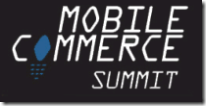Bank of America and Chase, two of the three largest U.S. banks, are putting an online spin on free checking offers using online banking, security, and other benefits to encourage applications. On the surface, Bank of America's approach appears much more effective. And with no direct-deposit requirement, it surely generates more new accounts. However, without knowing how the free accounts convert to profitable relationships, it's impossible for an outsider to recommend one approach over another.
Bank of America
Bank of America's free checking offer (see note 1) is difficult to overlook (screenshot below). The top-of-the-page banner has animations that showcase the major benefits:
- online banking
- bill payment
- "Keep the Change" debit card savings program
- SiteKey security
The teaser "We're redefining Free Checking" creates interest while the bright blue "open an account" and "special online-only offer" further entice prospect to click through the banner.
The landing page (screenshot below) reiterates the online benefits and features a large laptop to reinforce the high-tech nature of the account. Two additional benefits are added to the list:
- Free debit card with security protections
- Free ATM access at 17,000 BofA machines
Notes:
 1. The free checking banner appeared in a visit to the homepage from a Seattle IP address at 10 AM Pacific time today. It did not appear on afternoon searches from several computers.
1. The free checking banner appeared in a visit to the homepage from a Seattle IP address at 10 AM Pacific time today. It did not appear on afternoon searches from several computers.
2. The bank uses a live chat popup after lingering on the application for a short time (click on image right for closeup).
Chase Bank
Chase's homepage banner uses the "kitchen sink" approach with an image of an ATM machine, debit card, paper checkbook, laptop, and PDA along the top. The mobile phone is a good addition, but the ATM machine and laptop are so small, they aren't easily recognizable in a quick scan (see screenshot below).
Another problem: the paper checkbook, which is centered and slightly larger than the others, seems to get an inordinate amount of attention. I'm not sure that the checkbook or the debit card add much value. U.S. consumers pretty much realize those are included in a checking account.
Chase's landing page leaves a lot to be desired. The benefits are listed in small, gray type that is relatively hard to read. And the only call to action, if you can describe it as one, is the last line in small blue type, with an underlined "apply online." No buttons + no color + no large font + no offer = no interest.























